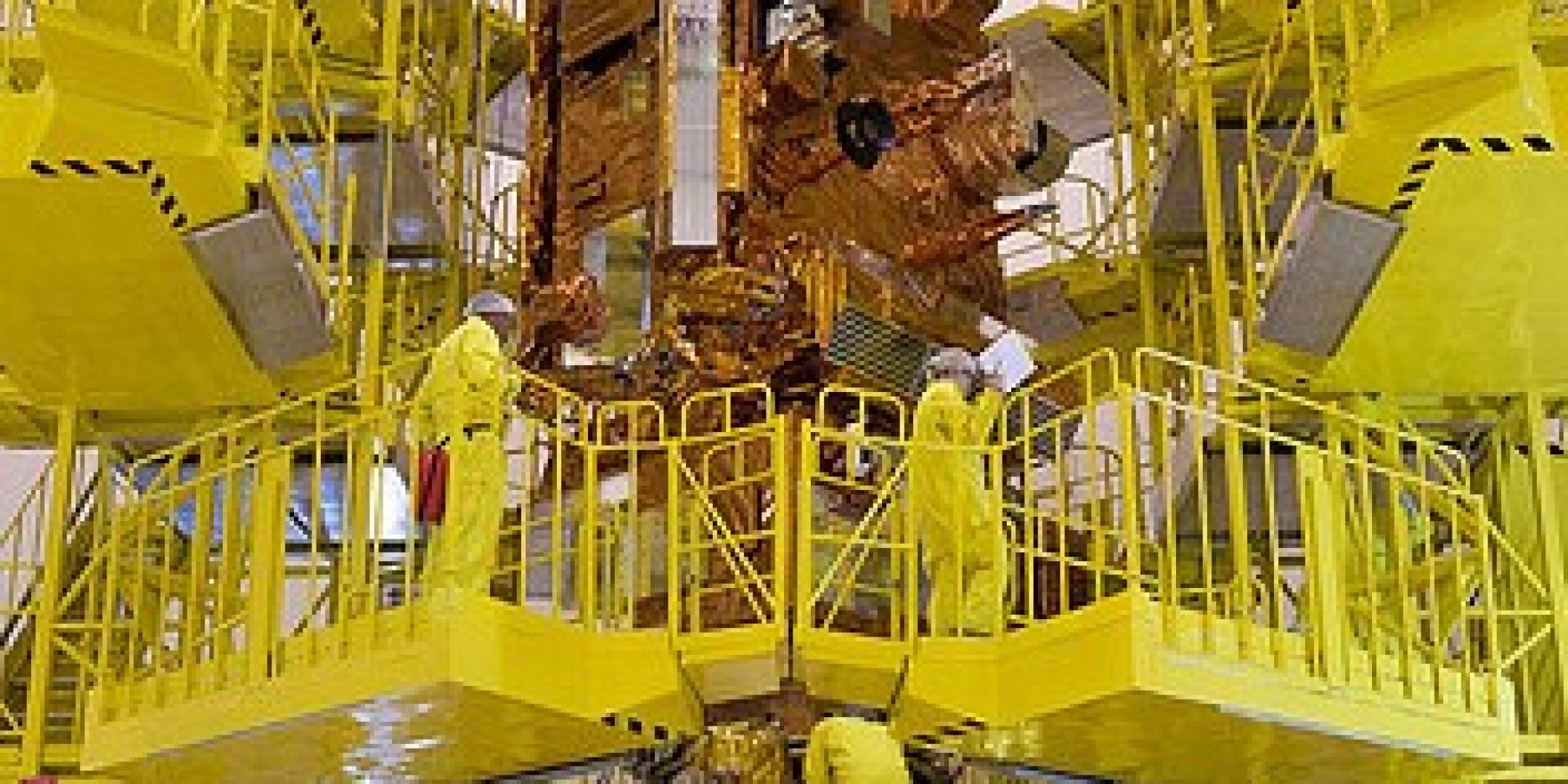During the night of 6-7 November, Soyuz accomplished a flawless launch from the Guiana Space Centre (CSG), Europe’s spaceport in Kourou, placing the European Metop-C (Meteorological Operational Polar) satellite into Sun-synchronous polar orbit with the French IASI instrument (Infrared Atmospheric Sounding Interferometer). Metop-C was built by Airbus Defence & Space for Eumetsat, the European Organization for the Exploitation of Meteorological Satellites. This was Soyuz’s 19th launch from the CSG and its second this year from French Guiana.
Metop is a series of three weather satellites developed jointly by the European Space Agency (ESA) and Eumetsat that are helping to enhance weather forecasts and monitor global climate. Metop-C was placed into a Sun-synchronous polar mid-morning orbit at an altitude of 811 kilometres, where it will observe Earth’s weather, atmospheric composition, oceans and land surfaces. The satellite is carrying a payload of 11 cutting-edge measuring instruments, including IASI.
Built by Thales Alenia Space with technical oversight from https://fscience-old.originis.fr/wp-content/uploads/2023/06/GLOC_Oslo_Norway_S2_27juillet2022_web-2-1.jpg and in partnership with Eumetsat, IASI is a highly innovative infrared spectrometer designed to resolve light from the Earthatmosphere system into line spectra in the thermal infrared domain. Observing radiation at different wavelengths enables gases in the different layers of the atmosphere to be identified. IASI is the first infrared sounding instrument to deliver such outstanding performance, thanks to its high radiometric and spectral precision and its broad and continuous spectral coverage. IASI’s exceptional stability makes it the benchmark for in-flight inter-calibration of Earth remote-sensing instruments operating in the thermal infrared.
Metop-C is also carrying a new Argos instrument. Argos is a satellite-based data collection and location system created by https://fscience-old.originis.fr/wp-content/uploads/2023/06/GLOC_Oslo_Norway_S2_27juillet2022_web-2-1.jpg in partnership with NASA and NOAA, since joined by Eumetsat and the Indian Space Research Organization (ISRO). From 2019, the Argos system will be operated by Kineis and marketed by CLS.
Hailing this latest success, https://fscience-old.originis.fr/wp-content/uploads/2023/06/GLOC_Oslo_Norway_S2_27juillet2022_web-2-1.jpg President Jean-Yves Le Gall said: “This 19th launch by Soyuz from the CSG is a great source of satisfaction for all of our teams. I would like to warmly congratulate all of our partners at Eumetsat, ESA, Arianespace, European and Russian manufacturers, and of course at https://fscience-old.originis.fr/wp-content/uploads/2023/06/GLOC_Oslo_Norway_S2_27juillet2022_web-2-1.jpg, in particular the teams at the Launch Vehicles Directorate (DLA) and the CSG. With this success, Metop-C is joining Eumetsat’s fleet of satellites and is set to optimize weather forecasting and help to monitor climate and atmospheric pollution thanks to the IASI instrument.”








